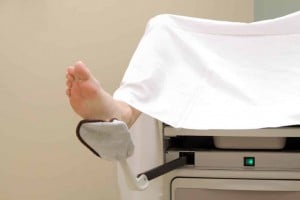Your doctor may suggest a labor induction for many reasons. Whether you’re overdue or you have pregnancy complications such as preeclampsia or placental problems, there comes a point when your baby may be safer on the outside than the inside. However, sometimes, your baby doesn’t know that and needs a nudge to come out. There are many modes of encouraging your baby and your body to start labor. After assessing you, your provider will choose the best one for you, depending on your body’s readiness.
One of these methods of labor induction is a Foley bulb. Also called a balloon catheter, a Foley bulb can soften, thin, and dilate the cervix. This may also cause labor contractions to start. Even if this doesn’t directly start contractions, a cervix dilated by a Foley balloon is more susceptible to future contractions of active labor. Once your cervix appears ripe for labor, you can move on to other modes of induction.1 Let’s further explore what a foley bulb induction is and whether it may be the right option for you.
What Is a Foley Bulb?

A Foley bulb was initially designed as part of a urinary catheter or a tube that drains urine from the bladder. When used for this purpose, the bulb is threaded through the urethra and into the bladder. Once in the bladder, the balloon is inflated with salt water to hold the entire catheter in place to drain urine. You may have a Foley catheter placed during labor and delivery, especially if you have an epidural.1,2
Note: There are other types of cervical ripening balloons available designed specifically for ripening your cervix during a labor induction that are not Foley Bulbs. A commonly used example is the Cook Catheter.11 These balloons can accommodate more saline than traditional Foley catheters.
How Does a Foley Bulb Work for Labor Induction?

The balloon part of the Foley catheter can also ripen your cervix to induce labor. Instead of being threaded through your urethra to your bladder, the deflated balloon is inserted through your vagina and cervix. Your cervix must be slightly dilated for insertion to take place.3
The Foley bulb sits under baby’s head at the bottom of your uterus. Once in place, your provider will inflate it with 1 ounce (or ⅛ cup) of water. This inflation holds the balloon in place and puts pressure on your cervix to help it dilate.1,3
How Long Is the Foley Bulb in Place?
The Foley bulb can remain in your uterus for up to 24 hours compared to the Cook Catheter balloon, which can only stay in place for 12 hours. If cervical dilation hasn’t happened by this point, your provider may remove the balloon and try a different method of cervical ripening and induction.1,4,5,12
If the Foley bulb is successful, it will fall out on its own, perhaps even less than 12 hours after insertion. However, the cervical ripening balloons (such as the Cook Catheter) often won’t fall out on their own and must be removed. Typically, the Foley balloon falls out when your cervix dilates to 3 centimeters. Sometimes, a Foley bulb can stretch your cervix enough so that your water breaks, and it can sometimes cause contractions to start.1
How Does a Foley Bulb Induction Feel?
A Foley bulb induction may feel like a pelvic or cervical exam, like when your provider checks you for dilation. Some women experience significant pain with the Foley balloon, especially when it’s initially inserted and inflated. Others report only pressure. The pressure and pain will likely lessen after insertion and sit in your cervix.1
A healthcare team member can insert the Foley bulb using their fingers or a speculum. Studies show the speculum was the more painful method of insertion. If you’re planning for a Foley bulb induction, consider asking your provider if they can insert it manually.6,7
In addition, a study that looked at the overall satisfaction of those induced with cervical ripening balloons vs. prostaglandins showed that the patient experiences were equivalent. The group with the cervical ripening balloon alone actually reported less pain.9
What Are the Risks of Foley Bulb Induction?
A Foley bulb induction is safe, but there are a few risks. It may fall out and not work, and it may be painful. Reaching the desired dilation from a Foley bulb can also take a long time. Rarely, it can cause infection by introducing germs into the uterus.1
What Are the Benefits?
A Foley bulb induction uses no medications and is a relatively low-cost, effective intervention. It dilates the cervix to 3 centimeters about 70% of the time. Your provider can also remove it at any time if needed. In addition, it’s safe for women who have undergone a cesarean section because it doesn’t pose a risk of an overstimulated uterus. If necessary, you can also combine a Foley bulb induction with medications to ripen the cervix.1
What Are the Alternatives?
Despite the benefits of a Foley bulb induction, there are alternatives to consider for ripening the cervix:
Breaking Your Water
An alternative to a Foley bulb induction is breaking your water. Your provider may suggest this to increase pressure on your cervix and start labor. However, breaking your water may be more effective once your cervix is ripe and is only safe if baby is already low in your pelvis.3
Membrane Sweep
With your consent, your provider may attempt a membrane sweep using a gloved finger to separate the amniotic sac from your cervix. This causes the release of chemicals that sometimes help labor to start within the next 24 to 48 hours. These natural chemicals are like medications, sometimes used to ripen the cervix. However, a membrane sweep avoids induction and isn’t a formal induction technique.3
Medications
Instead of a Foley bulb to ripen your cervix in preparation for an induction, medications such as Cervadil or Cytotec (misoprostol) can be used. They can be administered orally, in your cheek, or vaginally.4
Evidence shows that cervical ripening balloons are equally effective methods, compared to prostaglandins, for cervical ripening.10 Still, they’re also more likely to cause uterine hyperstimulation, fetal distress, and the need for instrumental vaginal delivery like forceps or vacuum births. You can’t use them if you’ve had previous uterine surgery, including a C-section.3,8
Pitocin through an IV is also an effective induction agent, but it works better on a ripe cervix. Pitocin alone takes a long time to ripen your cervix, and prolonged exposure to Pitocin during labor increases your risk for postpartum hemorrhage. However, Pitocin is the only medication safe for cervical ripening in patients with a history of uterine surgery.3
Is Foley Bulb Induction Right for You?
Inducing labor can be overwhelming and take a long time. You can take it one step at a time by using the Foley balloon to ripen your cervix without medication. Many people find this a manageable place to start when encouraging their bodies to kickstart labor without medication. Learning your induction options based on your cervical status can help you and your provider determine where to start.
































